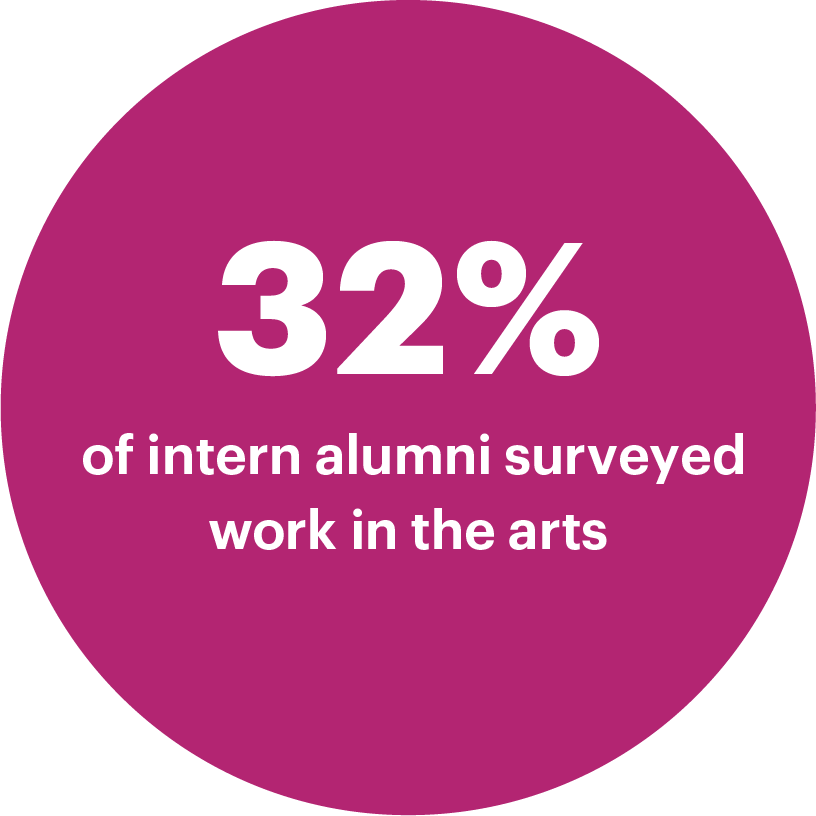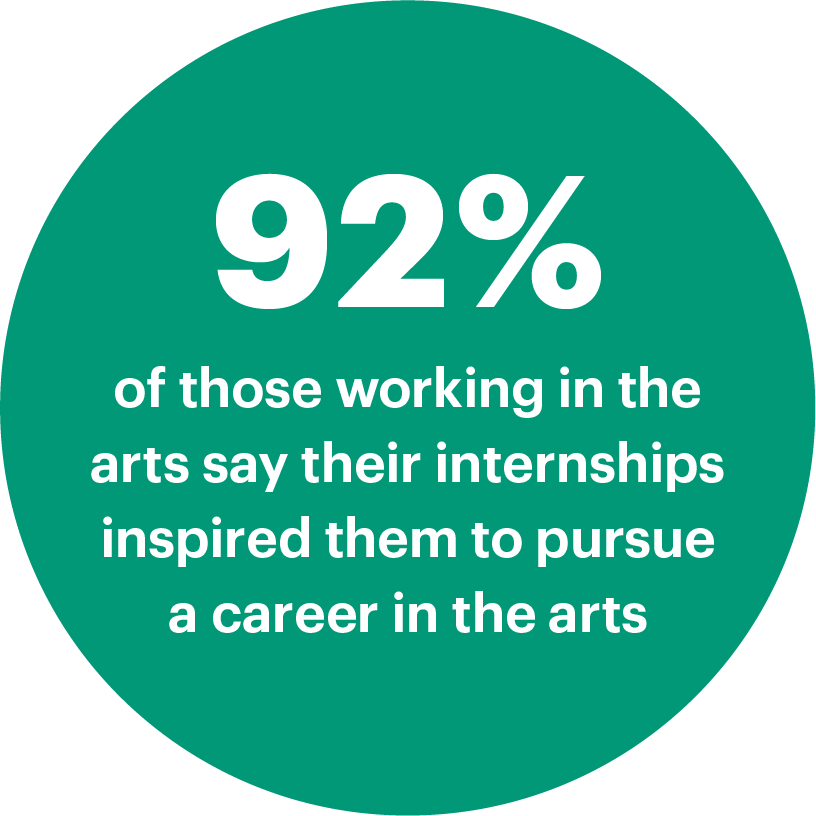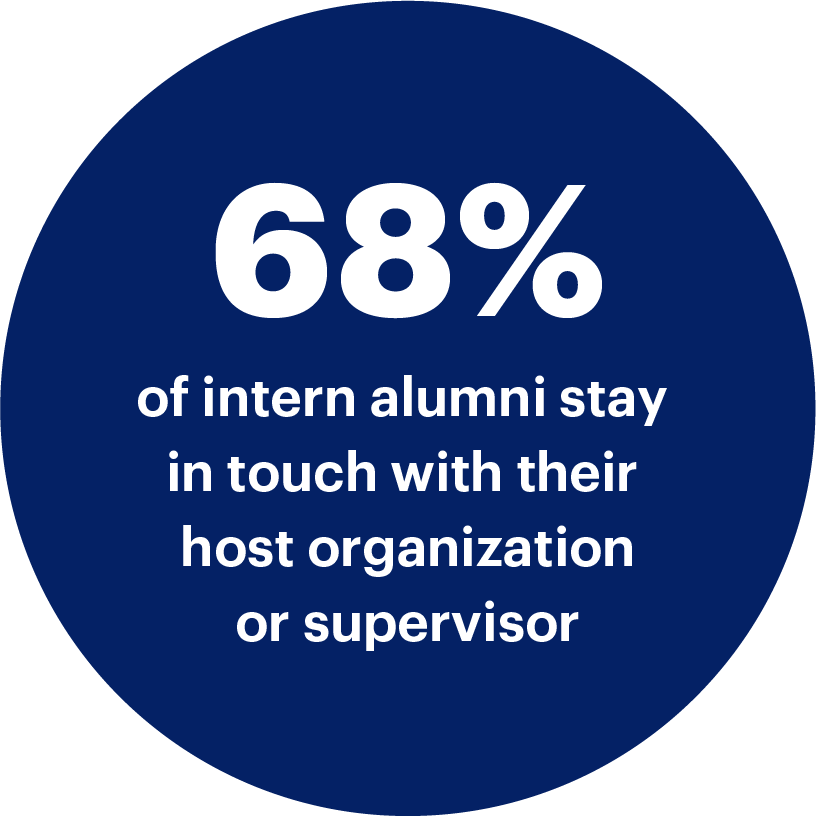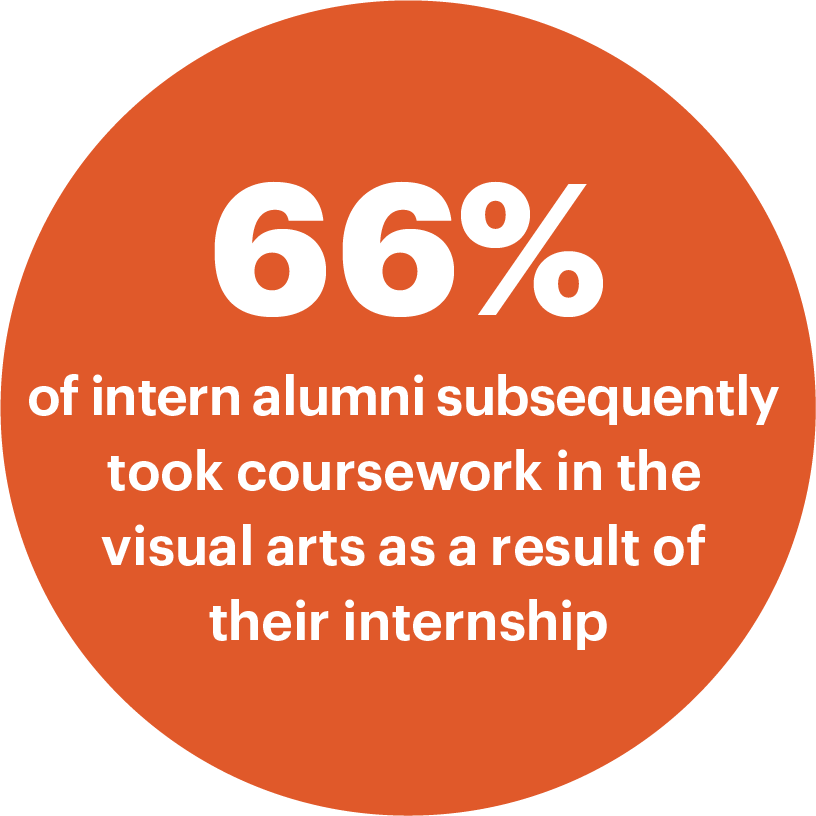Executive Summary
Los Angeles is one of the most culturally diverse cities in the world, yet staff at its museums and visual arts organizations does not reflect this racial and ethnic diversity. To address this situation, the Getty Foundation created a large-scale internship program in 1993 that continues to this day. This impact report reveals how Getty Marrow internships are changing the field, influencing professionals from underrepresented groups to pursue careers in museums and visual arts organizations and inspiring a lasting interest in the arts.
Background
The Getty Marrow Undergraduate Internship program was developed to foster greater diversity in careers related to museums and the visual arts (hereafter referred to as “the arts”). The program supports over 100 ten-week, paid internships throughout Los Angeles County each summer that introduce college students from backgrounds typically underrepresented in the arts to the full array of career possibilities in museums and visual arts nonprofits. Participation includes but is not limited to individuals of African American, Asian, Latino/Hispanic, Native American, or Pacific Islander descent. Since the program began, the Foundation has supported more than 3,200 interns at 175 local arts institutions, large and small, from major museums such as LACMA and the Hammer Museum to culturally specific organizations such as the California African American Museum and community-based organizations such as Self Help Graphics & Art.
“LA is majority minority, but the museums don’t look that way.” Getty Marrow Alum
The following report presents data from alumni surveys gathered over the last ten years, participant demographics collected in grant applications, and qualitative interviews with 20 alumni from across the nearly 30-year history of the program. Because this report was already underway when the COVID-19 pandemic began, a short survey was completed in summer 2020 to understand the early impact of the health and economic crises on the careers of alumni working in the field. Getty partnered with the consulting firm Engage R+D to analyze all of the data and compile them into this impact report. The executive summary highlights key findings on program impact, defines the core components of Getty’s internship model, outlines changes the Getty Foundation proposes to strengthen the program, and offers considerations for museums, arts nonprofits, and other funders who are engaged in advancing diversity, equity, and inclusion in the arts.
Key Findings on Program Impact
Getty Marrow internships bring individuals from underrepresented groups into arts careers
Among alumni not working in the field, 40% report that their current job relates to the arts and 46% have worked in the arts in the past.
Nearly all alumni working in the arts attribute their career paths to their internships
For students who want to pursue careers in the arts, undertaking multiple internships gives them the skills and experience to do so: 39% percent of alumni who had two internships and 50% of alumni who had three or more internships work in the arts compared to 30% who had one internship.
The majority of alumni engage with the arts, even if they work outside of the field
Since their internships, 45% of alumni have become members of and 8% have served on the board of a museum or arts organization (the board service percentage has doubled since 2008).
Alumni form relationships that endure long past the end of their internships
Interns build long-term relationships and strengthen professional networks that are essential to successful careers in the arts.
Internships increase participation in visual arts courses, a core area of the humanities
Interns enroll in more arts courses following their internships, contrasting with the downward enrollment trend in arts and humanities in higher education.
Program Model
The Getty Marrow internship model relies on six strategic components that work together to provide a comprehensive, educational, and rewarding experience for participants.
Further Findings
Additional results demonstrate the effectiveness of the internship program’s core components.
Scale matters. The more internships offered, the greater number of people who can participate and gain work experience in the arts. Getty has consistently funded internships of all kinds—from curatorial and conservation to communications, education, and programming—at many types of cultural organizations.
90% of the organizations currently in the program have had their interns go on to pursue work in the visual arts.
Pay is a necessity. Stipends create more equity and signal the worth of the interns’ contributions in the arts.
Many alumni said that they would not have been able to participate had the internship not been paid.
Quality projects build expertise. The Foundation requires that participating organizations design thoughtful work plans with meaningful projects for each intern.
97% of alumni reported strengthening their knowledge and 93% strengthening their skills related to the arts as a result of their internship experience.
Dedicated supervisors add value. Participating arts organizations are expected to provide mentorship.
88% of alumni agree that their supervisors provided them the guidance and support they needed during their internship.
Internships foster belonging. The majority of alumni agree that Getty’s program made them feel more connected to a community of professionals.
72% of alumni felt a greater sense of belonging to a network of museum and arts professionals as a result of their internship.
Areas to Improve
Although the findings show that the internship program impacts participants significantly, there is a continuing need to increase diversity in the arts. In Los Angeles County, for example, only 26% of the population identifies as white yet this demographic accounts for 59% of the arts workforce (see Exhibit 1.1 in “The Model”). Nationwide reports from the Andrew W. Mellon Foundation (see note 1, in “The Model”) focusing solely on art museums show even greater disparity, with white staff accounting for 72% of the workforce. These statistics help to explain why alumni consistently state that the Getty Marrow program is important and relevant to the needs of the arts field. In fact, 95% of alumni agree that the objective of the internship program is consistent with current needs in the field.
In addition to continuing the internship program and providing opportunities for alumni to connect, the Getty Foundation has identified the following action steps in response to survey findings described in more detail in the full report:
- Expand participation for alumni who self-identify as African American, the most underrepresented group among all former interns now in the arts workforce
- Increase the number of community college participants as a measure of greater equity and accessibility
- Strengthen culturally inclusive mentorship training for intern supervisors
- Provide more professional development for alumni in the arts, particularly at the early-career stage when many appear to struggle with securing full-time work
Insights for the Field
While internship programs like Getty’s can have an impact on diversifying the staff of museums and visual arts organizations, they are not enough to solve longstanding problems of racism and inequity in cultural institutions. Alumni interviews consistently point to three key challenges to careers in the arts: low pay, lack of diversity, and limited job opportunities. Several recounted experiences of racism in their institutions after entering the workforce.
Despite these challenges, many alumni remain in the profession because of a passion for what they do and a sense of responsibility to help diversify the arts. As one alum explained, “I choose to stay in this field because it will not change if I leave. There’s so much important work to be done to make visual arts organizations and museum spaces truly inclusive and equitable.”
“I’ve never had a work supervisor [in the arts] who is a person of color, so I understand how crucial it is for this program to exist.” Getty Marrow Alum
Getty is observing three other trends that deserve attention:
- Alumni are beginning to advance into positions of leadership. 16% of the 2019 survey respondents working in the arts identified as Senior Staff/Department Head and 5% identified as Executives. A growing number of these leaders from diverse backgrounds have expressed an interest in mentoring younger professionals from underrepresented groups. These leaders may also need support and encouragement in their own professional development.
- Many alumni in leadership positions appear to work in small and midsize community-based arts organizations rather than large museums. Further data-gathering and analysis could test how widespread a phenomenon this is and the conditions that have given rise to it.
- There appear to be a growing number of diversity internship programs in the arts across the country, many of them supported by foundations. More research can be done to map this trend and encourage arts organizations and the philanthropic community to come together to define common metrics of success, coordinate evaluation efforts, and share results.
Moving forward, the Getty Foundation seeks to match the dedication of Getty Marrow alumni and internship supervisors in advancing change. It pledges to continue the internship program, pilot and implement new professional development opportunities, and refine early-career interventions for alumni. The Foundation also invites closer collaboration with other funders to support arts organizations as they accelerate their efforts to better reflect the nation’s cultural diversity.






